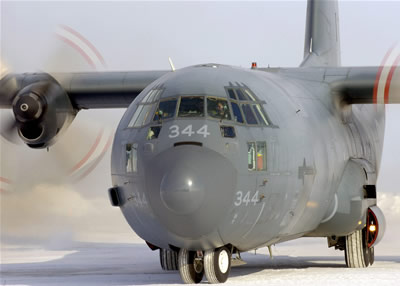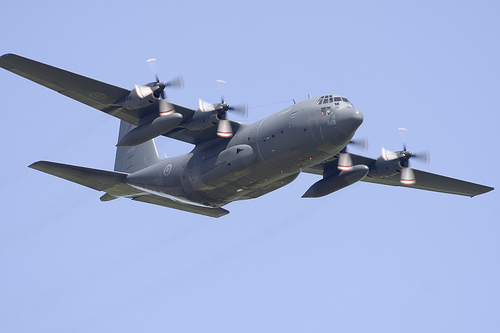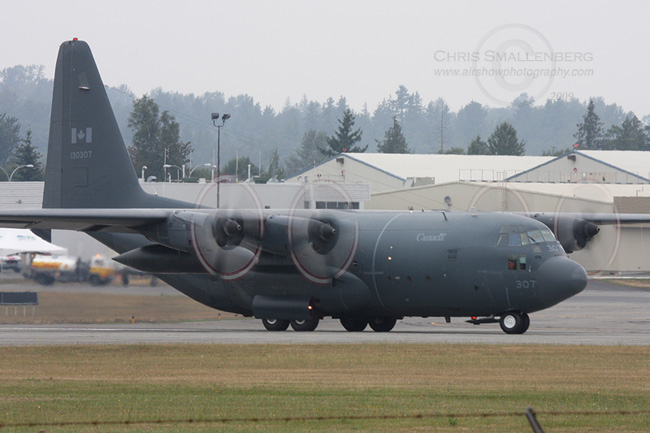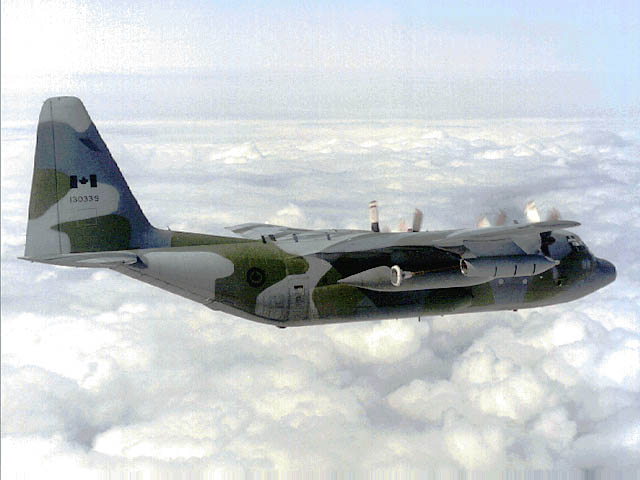The CC-130 Hercules transport aircraft has been in service with the Canadian Forces in southwest Asia since January 2002, when three Hercules deployed to the Persian Gulf with flight crews and ground staff as the Tactical Airlift Detachment. By the end of Operation APOLLO, in October 2003, these aircraft had transported some 6,000 passengers and more than 6.8 million kilograms (about 15 million pounds) of freight to destinations in the theatre of operations, including Afghanistan. On Operation ATHENA, the CC-130 Hercules continues to operate with the Tactical Airlift Unit, part of the Joint Task Force-Afghanistan (JTF-Afg) Air Wing. The Hercules is a mainstay of NATO airlift in Afghanistan.
The CC-130 Hercules is a four-engine fixed-wing turboprop aircraft that can carry up to 90 combat troops. It is used for a wide range of missions, including troop transport, tactical airlift (both palletized and vehicular cargo), search and rescue (SAR), air-to-air refueling (AAR), and aircrew training. It can carry more than 17,000 kilograms (about 38,000 pounds) of fuel for tactical AAR. In the tactical AAR role, the Hercules can transfer 450 to 900 kilograms (about 1,000 to 2,000 pounds or 454 to 910 litres) of fuel per minute, and refuels the CF-18 Hornet fighter aircraft in less than five minutes.
The Hercules has a maximum range of 7,222 kilometres (4,488 statute miles) and a cruising speed of 556 km/h (345 mph). Capable of short takeoffs and landings (STOL) on unprepared runways, it can respond to SAR emergencies on almost any terrain and under the most challenging weather conditions. In 2006, one CC-130 Hercules from 8 Wing Trenton delivered 12,250 kilograms (about 27,000 pounds) of equipment to Pakistan in support of a humanitarian aid operation by the CF Disaster Assistance Response Team.
The first CC-130 Hercules entered Canadian service in 1960, and the most recent Hercules was purchased in 1996. The first of 17 new J-model CC-130s will arrive in 2010 to replace the oldest aircraft in the Hercules fleet.



